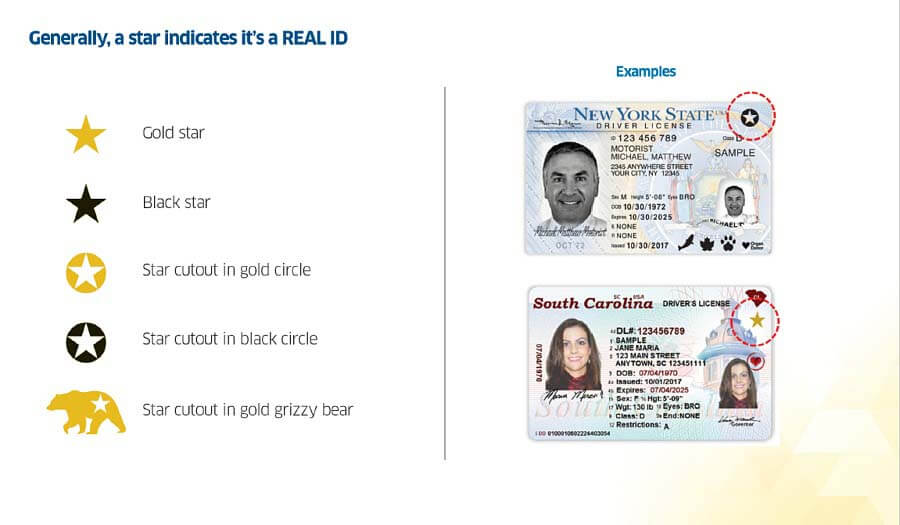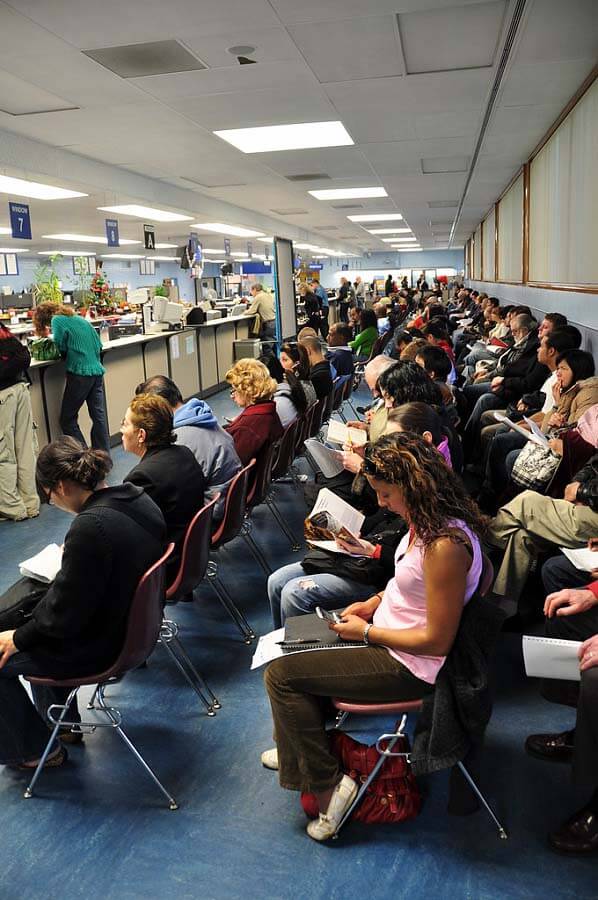You’ve probably heard a lot of buzz about the new stars on driver’s licenses by now. Maybe you’ve seen the signs at the airport. Maybe you’ve already braved the DMV to upgrade to the new ID. Or maybe you keep putting off this pesky task. If you’re out of the loop or you just want the CliffsNotes version, we’re here to explain what “REAL ID” is, why you need it, and how to get it.

What is REAL ID?
Congress established this new requirement through the REAL ID Act of 2005, based on recommendations of the 9/11 Commission, for the federal government to set standards for how forms of identification — like driver’s licenses — are issued and produced.
“TSA is doing everything we can to prepare our partners and the traveling public for the REAL ID deadline next year,” David Pekoske, administrator of the Transportation Security Administration, stated in a 2019 press release. “The security requirements of the REAL ID Act will dramatically enhance and improve commercial aviation security.” In short, REAL ID is designed to keep us safer and tighten airport security, as well as security in other federal facilities.
Why do I need a REAL ID-compliant license?
Starting October 1, 2020, every United States citizen or resident will need to present a REAL ID-compliant license/ID or another acceptable form of identification (like a passport or passport card) to access federal facilities — including boarding commercial aircraft. Airports are considered federal facilities, and therefore, this act affects your ability to enter them in order to board your flight. If you don’t have a REAL ID, you must have a passport to do these things.
You are not required to get the upgraded REAL ID-compliant license. Still, if you don’t have a passport or your passport expires soon, you must have a REAL ID to fly domestically within the United States, go into federal buildings or enter military bases. You can still keep a federally “non-compliant” license (if it’s not expired!), but you’ll only be able to use it to drive — not to fly. Most states highly recommend you apply for the REAL ID-compliant license the next time you renew.
RELATED: Here’s What’s in Our Travel Makeup Bag

Other important facts to know
- REAL ID is required at airport security checkpoints and boarding planes, as well as at secured federal facilities and nuclear plants.
- REAL ID is not required in other instances where you might need to show an ID, such as if you’re pulled over, voting, or checking in at a hospital.
- REAL ID isn’t required if you’re under 18.
- States will not automatically send you a REAL ID-compliant license if you renew online. You must go to the DMV and specifically ask for a REAL ID-compliant license.
- If you’re flying domestically, you can show your passport, passport card, or a DHS-trusted traveler card (like Global Entry, NEXUS, SENTRI or FAST) if you do not have a REAL ID-compliant license.
- If you’re flying internationally, you must have a valid passport. If you have an international trip planned, check to see that you have at least six months before your passport expires. Some countries will not let you fly if your passport expires within six months. (More on that here.)
- You cannot transfer a REAL ID license between states. Each state is required to view and image all documentation upon original issuance in that state. If you move, you have to go through the whole process again.
How to get your REAL ID
Most states and territories have already begun issuing the new licenses. You have to go to the DMV in person — it cannot be renewed online or through the mail. Here’s what you need to bring:
- One original or certified document that proves your identity, such as a passport or birth certificate. Photocopies will not be accepted.
- One document that shows your Social Security number, such as a W-2 form
- Two documents that prove your residency, including your street address, such as a utility bill, rental agreement or mortgage statement. You can use photocopies for these.
- If you’ve changed your legal name, you must also furnish name change documentation, which can include a marriage certificate, divorce decree or court order. All documents must be originals or certified. Photocopies will not be accepted.
- You can pay the fee using cash, check, debit or credit card. The cost varies by state, but it’s usually less than $60. Here’s a list of costs by state in 2018.
RELATED: Everything You Need to Know About Tennessee’s New Cell Phone Law

Make an appointment!
It’s a good idea to contact your local DMV before showing up to verify what types of documents are accepted. Since the deadline to get your new ID is approaching, DMV offices are likely getting pretty busy. In fact, appointments might not be available for several weeks. So make sure you don’t wait until the last minute and get an appointment as soon as you can. Click here more REAL ID info by state.
For more information about flying with a REAL ID, and to download and print informational materials, visit tsa.gov/real-id.
**********
For the best of the South — straight to your inbox! — subscribe to our newsletter HERE!



















